A Well Wrapped ”Goldmarie”
This has been an exciting year for ABR development and also for our team in general. There have been many challenges to be met and new methods of working have been initiated. We hope to write more about all of this later, but at the moment it will suffice to say that even severe illnesses within the lives of the team members and their families are being treated with a wealth of ABR ideas and techniques. Leonid Blyum is untiring in his development of ABR Practices and these wrapping techniques have been revised and improved this season as well. For our team, it is always exciting to see how the techniques work in the daily and practical life!
One of the newer ABR techniques we have been writing about frequently in the blog in 2017 (see: https://abr-denmark.blog/2017/09/12/as-good-as-being-yours/ ) are the new “Power Wraps”. These wraps are being integrated into the daily lives of more and more of our children and young people working in the program – but not only that – into the lives of adults with various conditions.
Some of these stories are so amazing that we need to start to share them and so we will begin below with the story of “Goldmarie”!
This is a hemiplegic woman of 48 years of age. When she was 8 years old she was run over by a drunk motorcycle driver. Upon awakening, she could not do anything at all, but then received 1.5 years of rehabilitation which brought her to the stand which she was before she started with the wraps in October 2017. The physio therapists told her when she was 9, that she could not achieve anything more – and so it was and her condition has been stable since then. Marie walks, she is independent, but the spasticity on the right side of her body – both arm, hand, leg, foot and face being affected – had remained since she was a child and had not improved at all.
When she heard that she could start to integrate the ABR wraps into her daily life, she was very excited and wanted to start straight away. Her husband agreed to help her apply the wraps. Within the very first day of doing wraps on her right hand and foot, she could start to feel changes. The tensions were much less, she could rest her weight on the right foot and put the heel down. After ten days of doing wraps she gave a long report of the transformations she was experiencing:
- After one or two nights with the wraps on I started to notice a difference. My lower arm was more relaxed than I could ever remember it being.
- My shoulder is not as tense and I do not pull it up into that tensed position as much as I used to do.
- It is easier to integrate the right hand into some usage.
- My face is more symmetrical – my husband noticed that I smile more symmetrical and talking is also easier.
- The tensions are much less.
When I started with the foot wrap a few weeks later, I could notice that it was much easier to walk on the right foot after only one night. The wrap bothered me in the night so I took it off, but the hours I had it on had an affect anyways.
Now after 9 months of continued wrap usage Marie has told us:
- The changes I could experience from the very start of using the wraps are less dramatic, but improvements keep coming.
- For me one of the most important things is that the tensions I always felt are mostly gone! This changes my entire day.
- Something is happening inside of me – it is not easy to explain.
- I am happy and relaxed and now enjoy life in a much different fashion! I am glad. My mood is much better.
- Improvements with my right hand continue to happen. It is easier to use it. I do not simply forget it because the left hand and arm are so much easier and stronger. But I can use the right hand with not as much effort and therefore I do use it more!
- The thumb on the right hand does not hide itself under my palm.
- It is much easier to turn the hand – (supination) and to open and
spread the fingers.
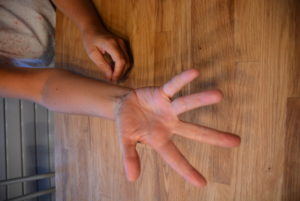
- It is much easier to walk on the right leg.
- My right foot can balance better and is not pulled up on its toes as much
- The position of the right leg is not as turned inwards as it was before.
- I can walk faster and even keep up with my husband when we go for a walk – otherwise he always needed to wait for me.
- I do not tire as easily as I used to.
It is astounding that 40 years after a severe accident a woman of 48 can achieve so many improvements with such little efforts over a short amount of time. Stories like these – and we now have many of them – are showing us that the entire understanding behind ABR is working and effective. For our ABR Parents it is a wealth of information that these adults are bringing us which makes us understand how important ABR effects are!
For a child with CP or other Special Needs ABR is as important as food and water is for the healthy child. ABR impact – mechanical tissue stimulation and mechanical tissue feeding – raises daily life quality on a day to day basis, and helps to prevent the downwards cycles from taking over!
We send a big thank you to “Goldmarie” for sharing her “Wrap Story” here with all of us.




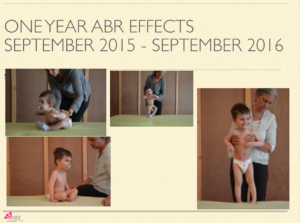

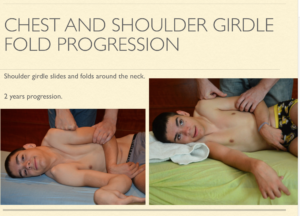
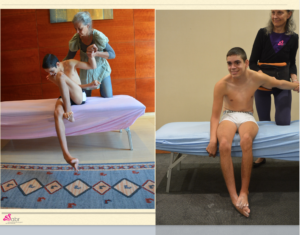
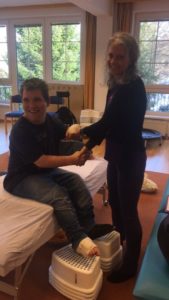
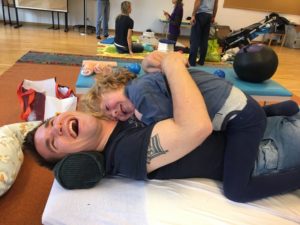



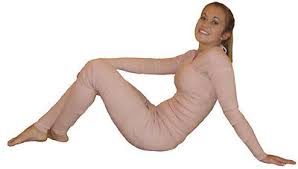


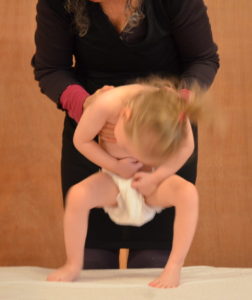


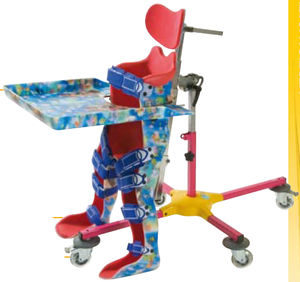




 nd all parents of children with some kind of walking function of the great value of the backwards walking in the sand for children with gait difficulties. Whether they are walking with support or walking free, the backwards walking is the perfect active exercise for them!
nd all parents of children with some kind of walking function of the great value of the backwards walking in the sand for children with gait difficulties. Whether they are walking with support or walking free, the backwards walking is the perfect active exercise for them!